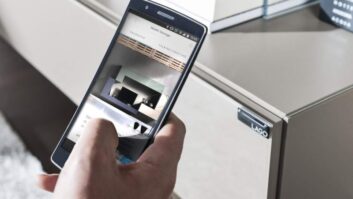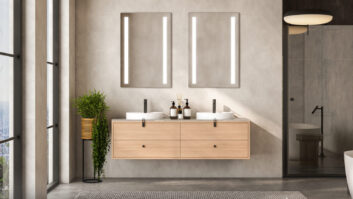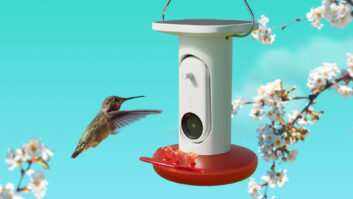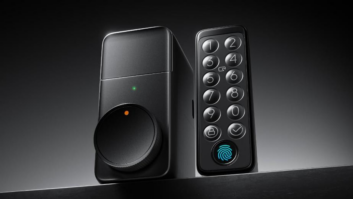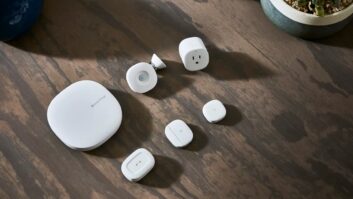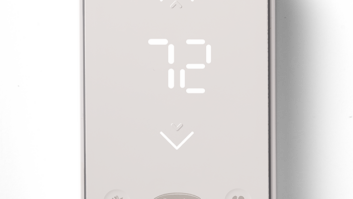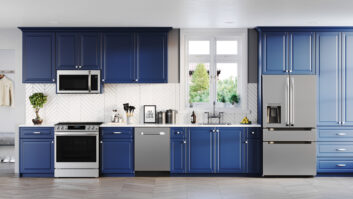
I’ve read numerous articles recently suggesting that consumers aren’t rushing to embrace the technology of the connected kitchen, and that many manufacturers have adopted a wait-and-see attitude before truly taking the plunge into this brave new world.
As the president of a company that is pioneering the integration of technology in kitchen appliances, I believe we’ve taken the plunge; and that the future is now. The adoption curve is only accelerating, and the ways that the connected kitchen is making life for the home chef more convenient, precise, safe, healthy and fun are both inspiring and exciting. Sure, it’s a picture that will be even brighter tomorrow. But technology is transforming the kitchen in amazing ways today.
Essential Trends
No one is watching this from the sidelines. NextMarket Insights forecast the smart kitchen as a $10.1 billion opportunity within five years. How, then, are these culinary consumers connecting today? How has the kitchen transformed into their virtual sous chef? It first helps to consider a few trends—and surmounted hurdles—which are driving today’s smart-kitchen revolution:
The Wi-Fi home. It used to be a vision. Today, it’s a mundane reality. Everyone is connected; indeed, in a recent article in Forbes, NextMarket Insights Chief Analyst Michael Wolf aptly noted that nearly one-fourth of cooks are already using a tablet or smartphone to help them in the kitchen.
Economies of scale. In a recent TWICE article it was accurately noted that connectivity is often reserved for a major appliance maker’s flagship line. I believe that trend is changing. Now, even at Dacor, we have been able to reduce the price gap between our traditional and connected offerings, which is only fueling greater consumer adoption.
The need for customization. Once the exclusive domain of the wealthy, customization is the new normal for all consumers. We choose our apps à la carte and make them our own. We custom-order our products online. If a product is not connected, it’s outdated and unappealing.
The desire to un-tether. If you’re entertaining in the backyard, why be tied to your range? If your meal needs tending, why can’t your oven send you a text and tell you? And if you’re already in the kitchen, why leave it to control other things in your house? These are features and technology that consumers want today, not tomorrow.
A shifting demographic. In this country, people are living healthier and living longer. They’re relying on smart, insightful technology to make cooking easier: everything from voice guidance for the visually impaired to tasty recipes for diabetic diners.
A mythical gender gap. Some have said that high-tech geekery is a strictly male realm. But it’s not the tech, it’s the functionality. Men and women both use smartphones, don’t they? And in case you don’t think that women are embracing technology, consider the fact that social media usage is dominated by women: 80 percent of adult Internet users who use social networking sites are female, and most are accessing those social sites via their smart phones.
Dacor’s 48-inch Discovery iQ dual-fuel range with touch-screen panel can be
controlled remotely by mobile app.
Tech That Adds Real Value, Today
As my industry colleagues noted in the TWICE article, it makes little sense to create features that excite engineers and no one else. The mission is to create value that home chefs want yesterday. I believe that this is possible today. Here are a few firsthand observations on how it can be done:
Get feedback from the field. It goes without saying that end-user consumers are the ones on the front lines of kitchen connectivity, but it takes a practiced ear to hear their real concerns, and translate that into what’s possible. Similarly, architects and kitchen designers are impelled to stay ahead of the technology curve, and their wish-lists can prove invaluable.
Don’t build walls. If your appliance can’t accommodate the cooking apps your customers already love, you’re losing an opportunity to connect. Today’s leading products can download and use apps from recognized sources such as the Google Play store for Android; in the future, these apps will not only run on smart appliances, but they’ll be able to control them, too.
Improve, improve, improve. Nobody wants a buggy device. And everyone wants the latest features. The best connected appliances can automatically update themselves, to minimize consumer frustration while continually adding new value to their investment. Insightful data analysis—based on usage patterns of real customers, provided anonymously to protect their privacy—can lead to real “aha moments” of invention and innovation.
Embrace The Change
Are you waiting for the future of the connected kitchen? Or are you taking advantage today? The future belongs to those who can see and capitalize upon its value right now.
Steve Joseph is president of Dacor, a family-owned manufacturer of ultra-premium kitchen appliances since 1965. Designed and built in California, Dacor’s cooking appliances integrate function and technology to create high-performing, intuitive products that reflect the lifestyle and needs of the passionate cook. Joseph will again speak to the “connected-appliance revolution” on an eponymous panel at the Smart Kitchen Summit on Nov. 5 in Seattle.




